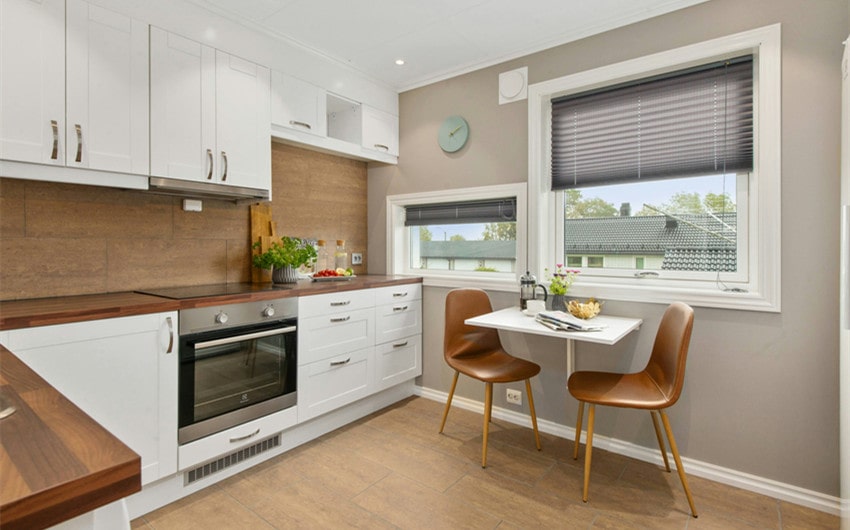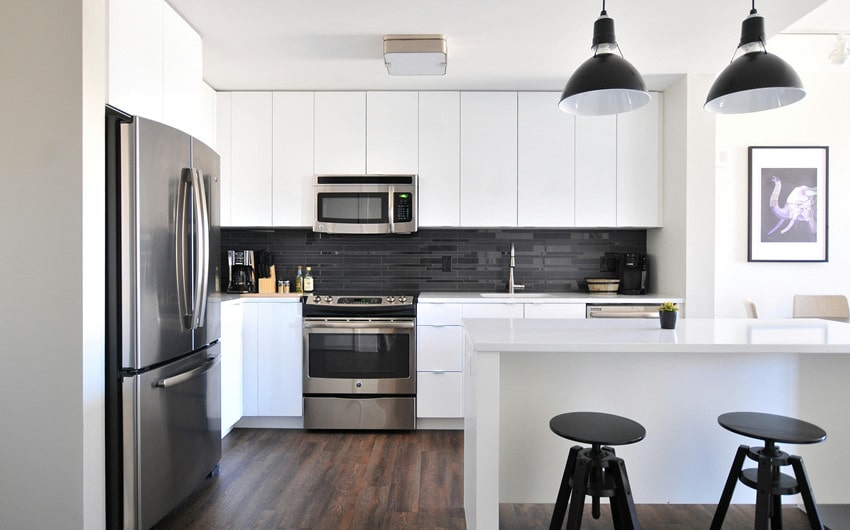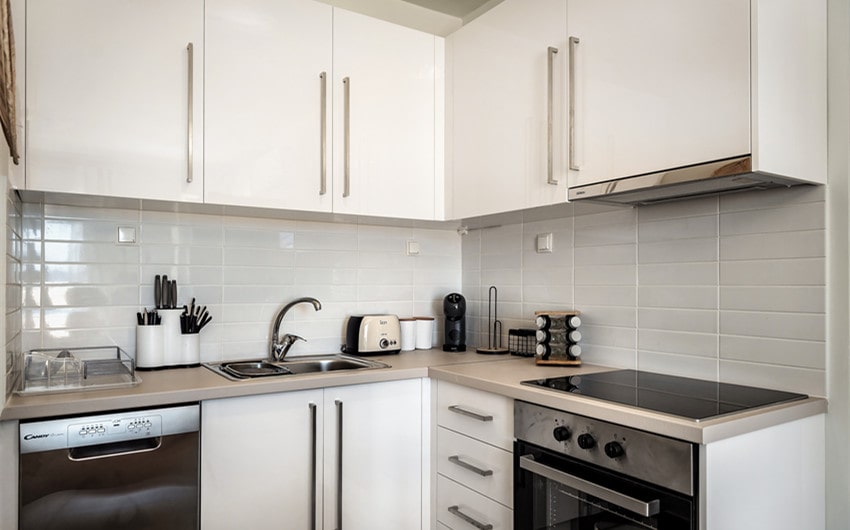Upper Cabinet Height Tips for a Functional and Stylish Kitchen
When designing your kitchen, one important detail that can impact both functionality and style is the upper cabinet height. Choosing the right height can make your kitchen more comfortable to use and improve the overall flow of the space.
Whether you’re considering the standard options or customizing your layout to suit your needs, understanding the right upper cabinet height ensures that your kitchen feels practical and looks great. It’s all about finding the perfect balance between accessibility and aesthetics, so let’s explore how to make the best choice for your space.
Standard Upper Cabinet Height: What You Should Know
When it comes to upper cabinet height, there are industry standards that most kitchen designs follow to ensure both functionality and visual appeal. The standard height for upper cabinets is typically between 30 to 42 inches tall, with the bottom edge of the cabinet generally installed 18 inches above the countertop. This measurement creates a comfortable space for preparing meals while allowing easy access to items stored in the cabinets.
For kitchens with 8-foot ceilings, 30-inch cabinets are common, while taller cabinets, such as 36 or 42 inches, are often used for spaces with higher ceilings to make the most of vertical storage.
These standard heights work for most people, but it’s important to consider your personal needs and kitchen layout. For example, if you’re taller or shorter than average, you might want to adjust the height to ensure comfort and accessibility.
Additionally, certain appliances like range hoods or microwaves may impact how high or low your upper cabinets should be placed. Understanding these guidelines will help you make informed decisions when designing a kitchen that’s not only functional but also tailored to your lifestyle.

Factors That Influence Upper Cabinet Height
Several factors play a critical role in determining the ideal upper cabinet height for your kitchen. While standard measurements exist, each kitchen is unique, and adjusting the height based on specific needs can enhance both functionality and aesthetics. Here are the key factors to consider:
Ceiling Height
One of the primary factors influencing upper cabinet height is the overall height of your kitchen ceiling. In kitchens with 8-foot ceilings, standard 30-inch cabinets are commonly used, leaving space between the cabinet top and the ceiling, which can be used for decorative purposes or left open.
If your kitchen has higher ceilings, you may want to opt for taller upper cabinets, such as 36 or 42 inches, to make the most of the available vertical space. In some designs, cabinets can even extend all the way to the ceiling, offering additional storage and a more polished, streamlined look.
User Height
It’s essential to consider the height of the primary users in your home when selecting upper cabinet height. Cabinets installed too high can make it difficult to reach frequently used items, especially for shorter individuals. For those on the shorter side, lowering the upper cabinets slightly from the standard 18 inches above the countertop might make them more accessible. Conversely, taller individuals may find that standard heights work just fine, or may even prefer cabinets installed slightly higher for comfort.
Space for Appliances
The placement of kitchen appliances such as microwaves, range hoods, and refrigerators can also affect upper cabinet height. For instance, if you have an over-the-range microwave, you’ll need to leave enough space between the countertop and the microwave for proper ventilation, which might limit the height of the cabinets around it.
Similarly, range hoods often dictate how high nearby cabinets can be installed, especially when considering the clearance required for safe and effective operation. In these cases, you may need to customize the upper cabinet height to fit seamlessly around your appliances.
Customizing Upper Cabinet Height for Your Kitchen
While standard cabinet heights may work for many kitchens, customizing the height of your upper cabinets can make your kitchen more functional and better suited to your specific needs. Here are some ways to tailor upper cabinet height based on your kitchen’s unique layout and requirements:
Tall Ceilings: Utilizing Vertical Space
In kitchens with tall ceilings—especially those 9 feet or higher—standard upper cabinets may leave a large gap between the top of the cabinet and the ceiling. In these cases, opting for 42-inch or even taller cabinets can maximize storage space and create a more seamless, elegant look.
Another option for tall ceilings is installing stacked cabinets, where smaller upper cabinets are placed on top of the standard cabinets. This approach not only utilizes the vertical space but also offers additional storage for items that aren’t used frequently. Stacked cabinets can also enhance the visual appeal of your kitchen, giving it a custom, high-end feel.
Shorter Users: Lowering the Cabinets for Accessibility
If you or other family members are shorter in height, lowering the upper cabinets from the typical 18-inch gap above the countertop can significantly improve ease of use. By reducing the gap to 15 or 16 inches, you can still maintain a functional workspace while ensuring that the upper cabinets are more accessible.
This adjustment can be particularly useful in kitchens where step stools or ladders are impractical. Lowering the cabinet height makes it easier to reach frequently used items without straining or requiring additional help.
Open Shelving Alternatives
If you prefer a more modern or open look in your kitchen, open shelving can be an excellent alternative to traditional upper cabinets. Open shelves can be installed at any height, allowing you to customize their placement based on what works best for your needs and the overall aesthetic of your kitchen. This option works well in kitchens where homeowners want easy access to everyday dishes or decorative items, without the bulk of traditional cabinets.
Additionally, open shelving can make a kitchen feel more spacious and airy, especially in smaller spaces.
Blending Functionality and Aesthetics
When customizing upper cabinet height, it’s essential to strike a balance between functionality and aesthetics. While practical considerations such as user height and appliance placement are important, you’ll also want to think about how the cabinets contribute to the overall look of the kitchen.
For instance, taller cabinets may give your kitchen a more polished, built-in appearance, while shorter cabinets can make a small kitchen feel more open and less overwhelming. Consider your personal style and how the height of your cabinets will affect the overall design and flow of the space.

Upper Cabinet Depth and Its Relationship with Height
The depth of upper cabinets is a crucial factor in kitchen design, directly affecting both storage capacity and accessibility. The standard depth for upper cabinets is typically 12 inches, which strikes a functional balance by offering enough space to store everyday items while ensuring that they are within easy reach. This depth also prevents the cabinets from extending too far into the workspace, keeping the kitchen open and comfortable to navigate.
When customizing cabinet height, it’s important to also consider adjusting the depth. Taller upper cabinets, for instance, often benefit from increased depth—perhaps up to 14 or 16 inches—to maximize their storage potential. This allows you to store larger items like cookware or small appliances without sacrificing accessibility.
Conversely, shorter or lower cabinets may require shallower depths (around 10 inches), ensuring that frequently used items remain easy to reach, particularly for those who may find higher shelves more difficult to access.
Additionally, the relationship between depth and height has a direct impact on the kitchen’s visual proportions. Taller, deeper cabinets can provide a substantial visual anchor in kitchens with high ceilings, offering a more cohesive and polished look. However, in smaller kitchens, deeper cabinets may make the space feel cramped or overwhelming. Keeping the depth closer to the standard 12 inches in more compact kitchens helps preserve a sense of openness and flow.
Appliances also play a role in determining the appropriate cabinet depth. For example, over-the-range microwaves generally require at least 12 inches of depth for proper installation, while upper cabinets placed above a refrigerator may need to be deeper—around 24 inches—to align with the appliance’s depth. This alignment helps create a unified, streamlined look that enhances the overall kitchen design.

